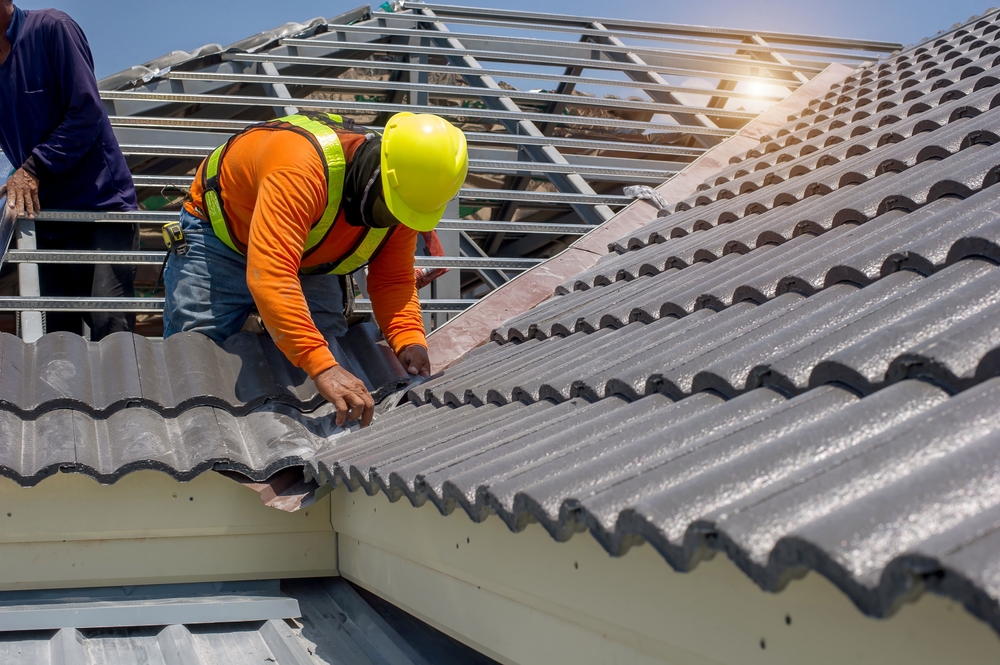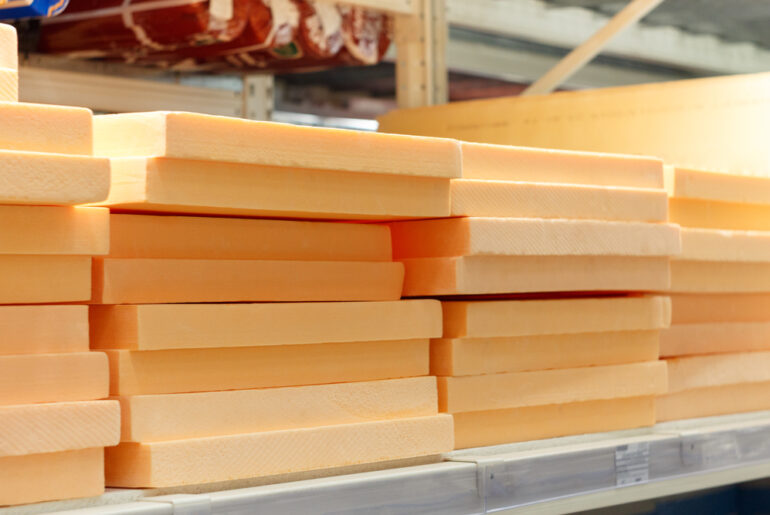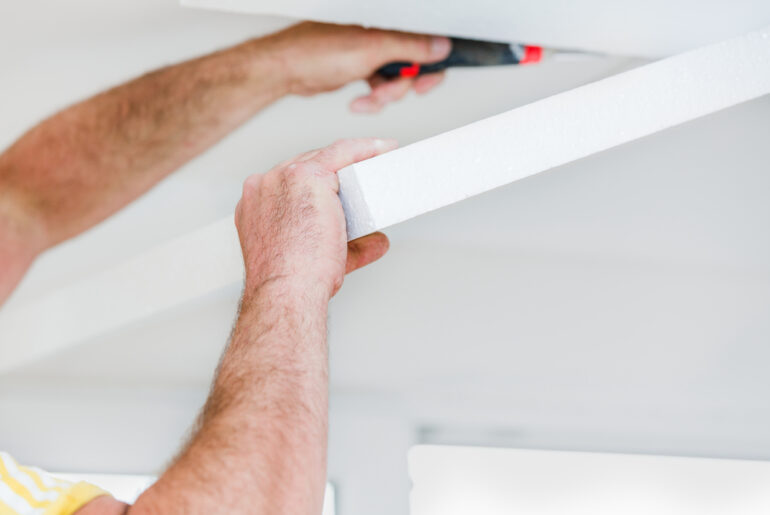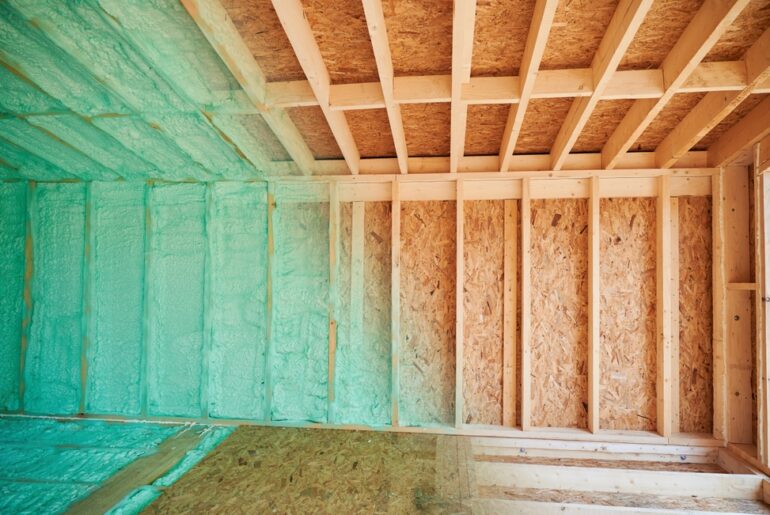Rigid foam has been used in roofing for decades either inside the structure, between roof beams or outside as part of an external envelope. But is it right for you?
There is a lot to think about. Is your project a new build or a renovation? Which climate zone covers your area? Is rigid foam board insulation definitely the practical choice given the budget and time constraints of the project?
It’s also sensible to consider whether to factor in future proofing for further development as time and funds allow. Sometimes buildings need to grow with a family or business over time.
Here’s our guide to rigid foam insulation for roofs.
What Foam Boards to Use
Polyiso
Polyiso has the highest starting R-value of all the foam boards on the market, however this does diminish slightly over time, approximately the first six months of its life is spent off-gassing. It starts out scoring a big 6.8 per inch, then over time polyiso will likely drop to about 5.5 or 5.6, which still puts it in the top tier, but it’s worth working into your insulation calculations.
Fiberglass faced polyiso is ideal for roofing insulation as it is UV and impact resistant, allowing you to walk across the roof without fear of damaging the insulation foam board during installation work. It is the most expensive choice per board foot, but it can be used with other foam insulation boards if you need to balance a budget by mixing and matching, but still want to maintain a level of quality.
Styrofoam
Styrofoam is the mid-range, mid-performance, and mid-price candidate, more durable than polystyrene and with only a slightly lower R-value of 5.2 per inch in its high-density iteration. Unlike polyiso Styrofoam will not lose R-value unless it becomes waterlogged, which, if your roof is detailed correctly, should not happen.
Styrofoam is particularly versatile and can be delivered with a tailor-made taper for your flat roof construction whether you are covering a roof with a single ply membrane or multi-layer bitumen system. Many manufacturers supply roofing boards with tongue and groove edges for better fitting, and to eliminate gapping, although it is always best practice to tape or glue any joint.
Polystyrene
The Cinderella foam insulation board, polystyrene has the most insulating potential per dollar spent than any other insulation board despite having the lowest R-value per inch (between 4.5 and 5 depending upon manufacturer). If the aim is to save energy costs and minimise a renovation or build budget then polystyrene is your friend.
However there may be other costs to factor in as polystyrene is not as robust as either polyiso or Styrofoam. Also it will likely require protection from pests as despite being treated against vermin and insects it is vulnerable to attack if any part is left exposed.
What Roof Types
Pitched Roof
What is a Pitched Roof?
Simply put, a pitched roof is a traditional sloping roof that is an obvious triangle on top of a building. Usually covered in shingles or clay tiles a pitched roof is the most common choice for house construction.
Your pitched roof attic is usually an unconditioned, vented space with insulation on and between the ceiling joists (the attic deck). This is the traditional way that houses have been insulated for decades and is referred to as a cold-roof construction.
However, new builds often install insulation that follows the roofline instead, which is referred to as a warm roof construction as the insulation is outside of the roof structure. It also means that the attic space will not have to be ventilated and pipes, conduits and other services are not exposed to extreme temperature changes over time.
External Insulation
Insulating the roof sheath with foam board insulation means that the attic can become part of the conditioned space of the house, making it more usable, and potentially liveable in future. If your project is a newbuild then this is a pretty straightforward option.
If you are renovating, and the shingles on the roof need to be replaced then it is worth seriously considering laying foam board insulation externally before replacing the roof covering. Remove all existing roof coverings and underlayment and check the sheathing is in good condition.
Sheathing can be damaged by water leaks, especially around vulnerable areas such as vent penetrations or chimney stacks. These areas will have to be replaced and repaired.
The Method
A control membrane will need to be fitted securely directly to the sheathing. If the sheathing is OSB or ply board then it could be as simple as taping the joints with a weathertight tape, but for best results a self- adhesive water control membrane, overlapped at all joints is recommended.
Lay the insulation boards down in multiple layers with all board edges offset away from each other. Secure them with screw fixings and washers down into the rafters. Do not rely on the sheathing to hold the insulation.
If your project is in an area of high snowfall where there might be issues with ice dams then the top face of the insulation will need to be able to receive flashing or sheathing tapes to secure it from water ingress.
Cathedral Ceilings
When you want to make the most of an elevated ceiling that reveals the height of a structure while maintaining a comfortable living space, then foam board applied to the external sheathing of a cathedral ceiling will ensure the full drama of that space is realised.
Internal Insulation
If you cannot work on the external faces of your roof, perhaps the shingles were recently renewed without insulation, or maybe access is inadvisable for other reasons, then it is entirely possible to insulate with foam board from inside the attic space.
Given the choice it is always preferable to insulate the slope of the roof, thereby conditioning the attic space.
The Method
It is advisable not to insulate directly against the roof sheathing from the inside as you will need to leave an air gap to provide ventilation for the structure, and to prevent conditions that lead to mold and mildew growth.
Cut the foam board to fit between the rafters and seal with caulk, construction glue or spray foam.
Best Pitched Roof Foam Board
Foil-faced polyiso is the foam board most recommended for the top layer of insulation, however, if it is over-exposed to water it can shrink up to about 1-2% over its lifetime, opening up gaps of up to 1/8” between boards over time. A tough weathertight or flashing tape will overcome this problem and keep your roof secure.
Tongue and grooved Styrofoam is also recommended as it is a very stable product, and the interlocking feature of its design helps to maintain a continuous thermal envelope. Specialist dense polystyrene foam boards can be used for external roofing, however, as previously mentioned, they are not as robust as other foam boards, so would be better used internally.
Built up Flat Roof: External Insulation
What is a Built-up Flat Roof?
A built-up flat roof is a many-layered construction where foam board, taped and glued, could become part of the water ingress defence strategy. Built up flat roofs are typically recommended for extensions to existing buildings where the plan is to maximise additional interior space for the lowest cost per square foot.
Pitching the Gradient
If you have not specified tapered insulation then the gradient will have to be built into the structure with timber firring pieces denoting the slope of the roof. In most cases the roof will be either square or rectangular and so this is a straightforward task for any carpenter.
If you are replacing or upgrading an existing flat roof then the taper will already be built into the roof, so the only major structural work required will be to any parts that might have to be replaced following leaks or other damage.
The foam board insulation is laid on a vapor control membrane, the joints taped together. The insulation can be glued to the membrane if the roof is enclosed with a parapet and drain weirs, removing the need for mechanical fixings, which should also remove the possibility of thermal bridging through the structure, making the insulating envelope fully continuous.
If there will be a need for regular access to the roof then a layer of ply or OSB board should be laid over the insulation to protect it from compression damage, which can reduce performance of the insulation.
What Other Insulation Products Can You Use?
There are few other recommended insulation products for use externally apart from mineral wool and aluminium multi-foil products. Internal insulation targets can be achieved using any other insulation product if the site is suitable.





